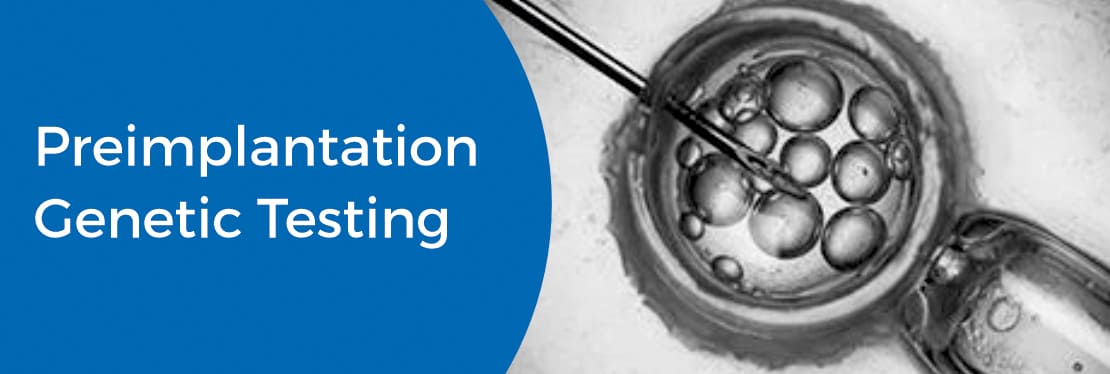Overview
The past several decades have seen tremendous advances in the field of medical genetics. The application of genetic technologies to the field of reproductive medicine has ushered in a new era of medicine that is likely to greatly expand in the coming years. Concurrent with an in vitro fertilization (IVF) cycle, it is now possible to obtain a cellular biopsy from a developing embryo and genetically evaluate this sample with increasing sophistication and detail.
Why it’s Done
Preimplantation Genetic testing for Aneuploidy-PGT-A
The purpose of PGT-A is to screen embryos for whole chromosome abnormalities before its use. The selection of embryos for transfer was based mainly on morphologic criteria, but many women failed to achieve pregnancy despite transfer of morphologically optimal embryos.
Preimplantation genetic testing-aneuploidy was proposed as a way to detect whole chromosome aneuploidy before transfer and thus potentially increase live birth rates and decrease early pregnancy failure rates.
Primary candidates for PGS can inculde the following:
- Women of advanced maternal age
- Couples with history of recurrent pregnancy loss
- Couples with repeated IVF failure
- Male partner with severe male factor infertility
How You Prepare
In order to have embryos to biopsy for PGS, couples must udergo invitro fertilization (IVF).
What you can expect
The screening process is explained to prospective parents as it invloves five steps.
- The eggs are retrieved and fertilized.
- A clincian/an embryoloist takes an embryo biopsy of day five blastocysts.
- The biopsy samples are analyzed for chromosomal abnormalities and categorized as normal (Euploid), abnormal (Aneuploid).
- The genetic testing lab delivers results to the clinician.
- Embryo of the best blastocysts are transferred into uterus.
Results
Most miscarraiges are due to aneuploidy, PGS allows doctors to only transfer normal embryos, PGT lowers the risk of miscarriage.Genetic testing can potentially reduce the need for more invasive forms of testing during pregnancy.
Risks of the procedure
Most of the risks invloved in PGS treatment are similar to those for conventional IVF which invloves:
- Risks of ovarioan hyperstimulation syndrome,multiple pregnancy, and increased risk of birth defects not related the genetic test.
- Risk of biopsy or freezing harming the embryos.
- False negative results, where an abnormal embryo is transferred to the uterus, resulting in possible miscarraige, and health embryos are dicarded, limiting chances of healthy pregnancy.
- Test could reveal there are no normal embryos to transfer.
PGT-A can be a helpful diagnostic tool, but it’s not for everyone. Clinicians should inform patients of all their options and work together to make an informed decision about whether genetic screening is the right choice.
